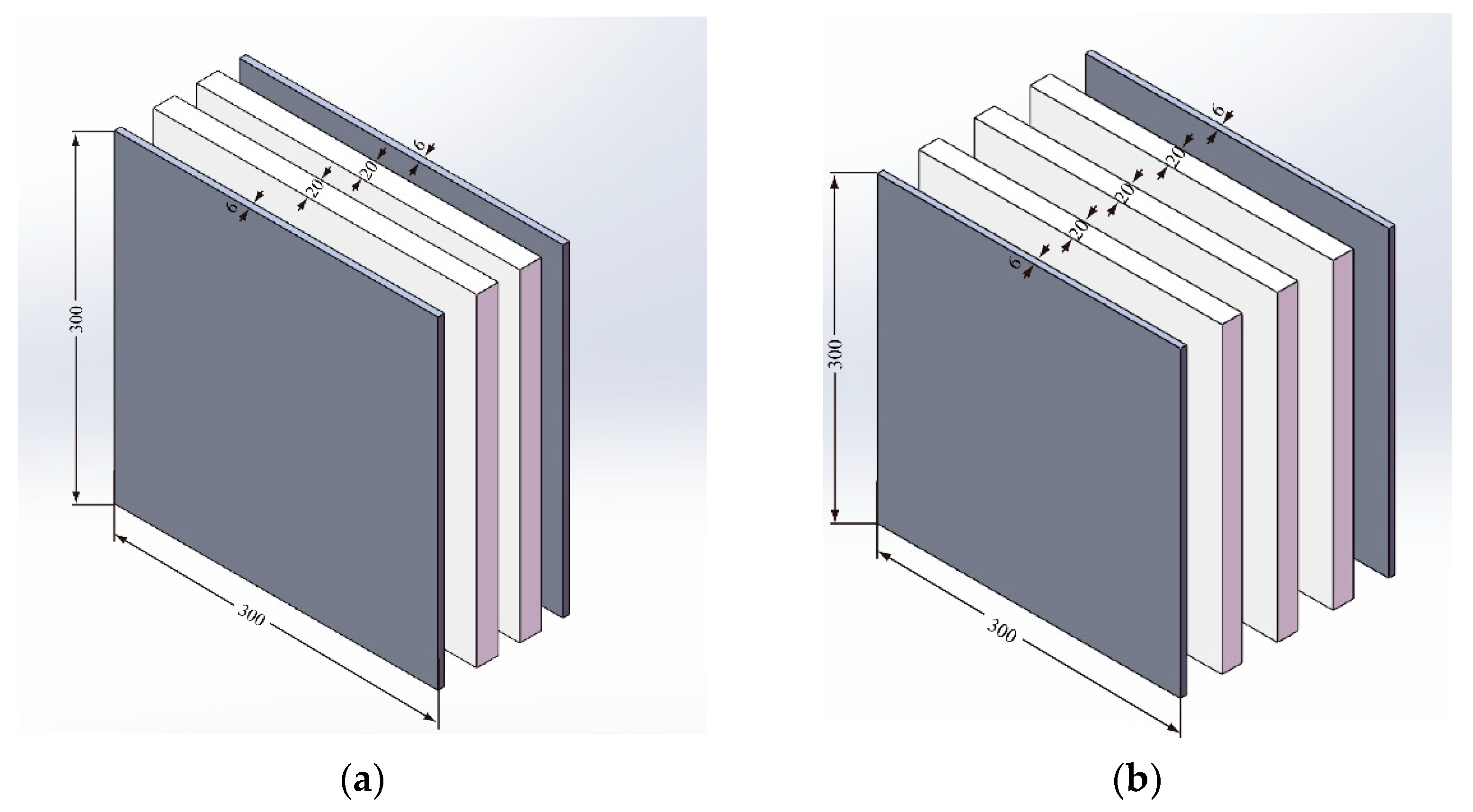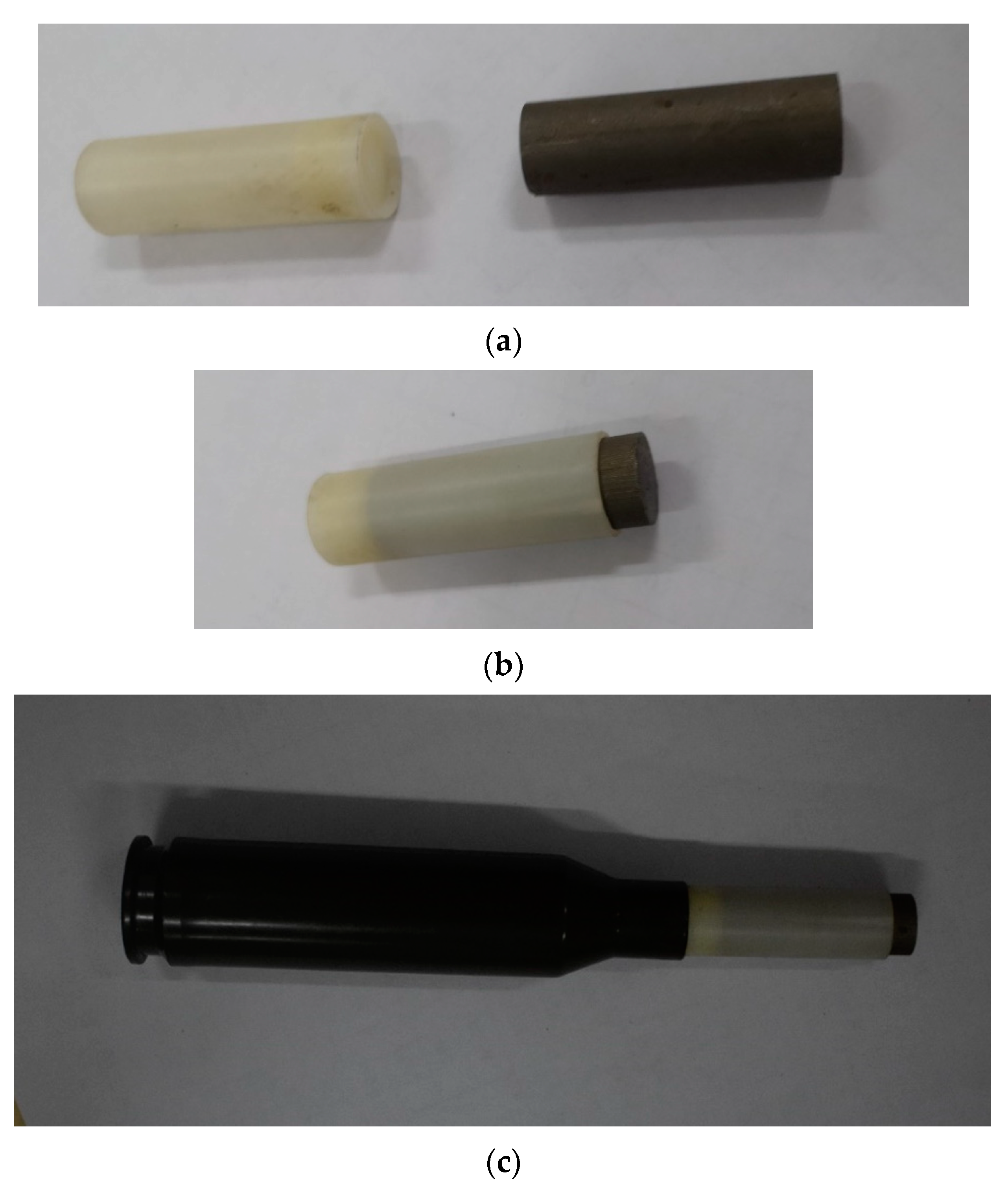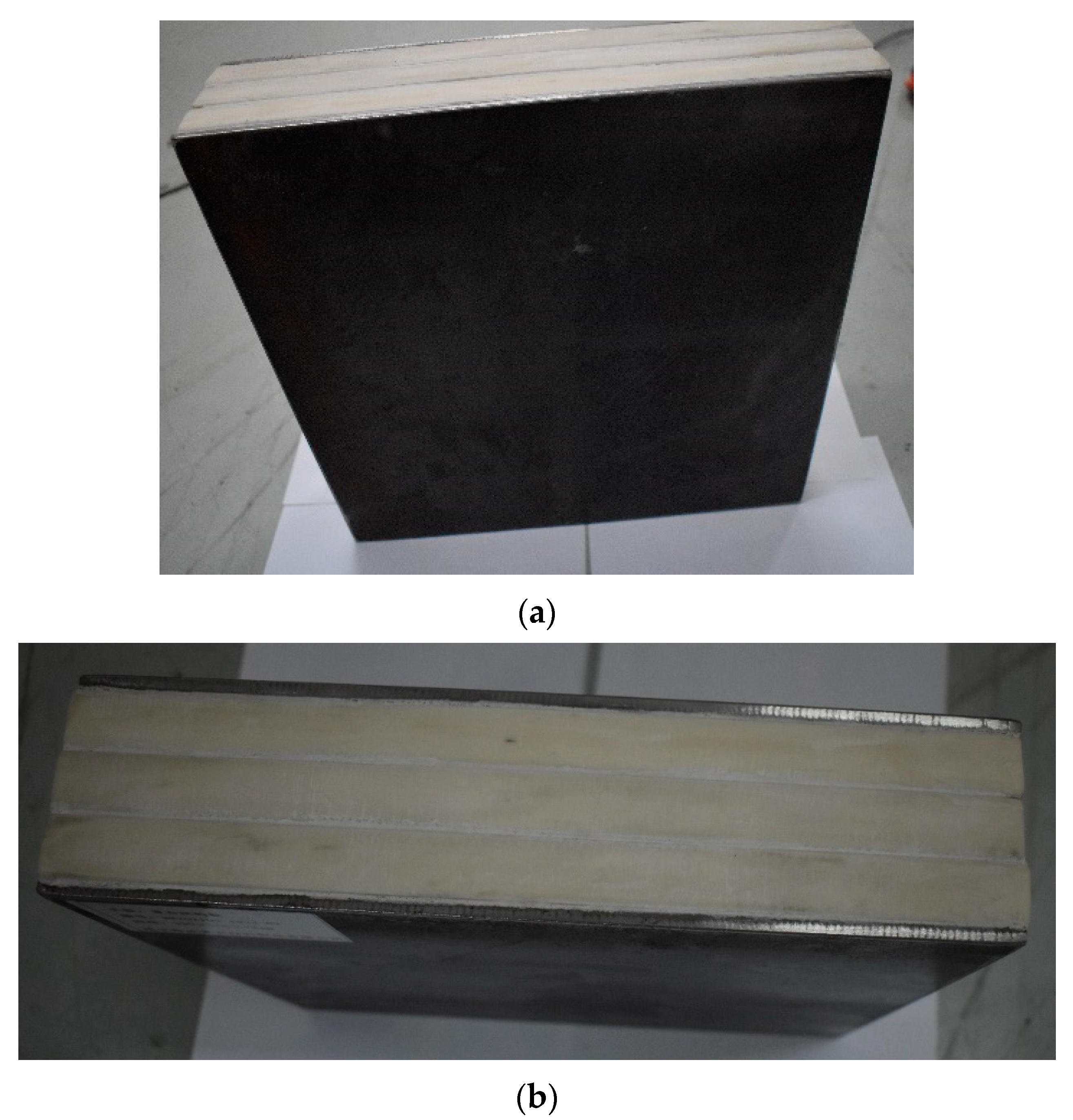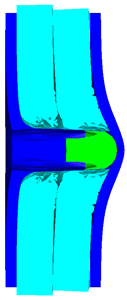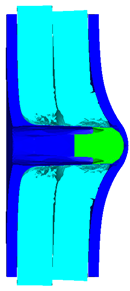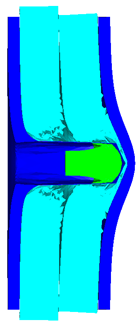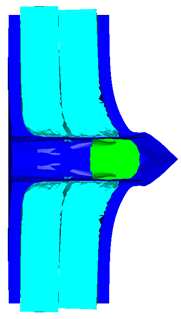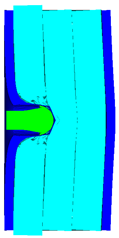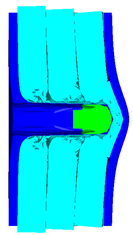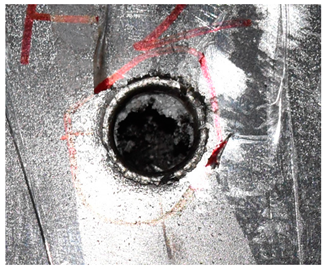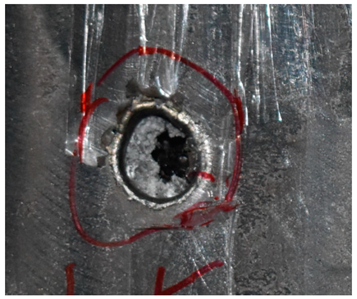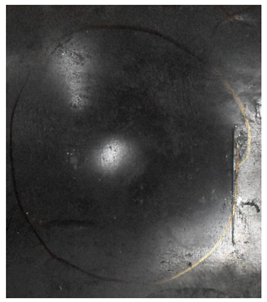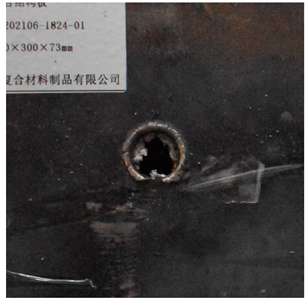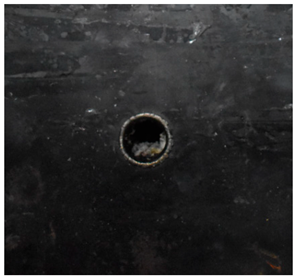3.1. Setup of Numerical Model
To understand and predict the dynamic response of UHMW-PE composite armor under ballistic impact, three-dimensional numerical models are developedd using AUTODYN non-linear software. The version of AUTODYN is v11.0 in software of ANSYS 11.0, located in Nanjing, China.
As shown in
Figure 3, all of the components in the numerical simulation are modeled with the 3D Lagrange algorithm in AUTODYN. Combing computational efficiency and accuracy, the half 3D model is carried out, with a mesh size of 1.2–1.5 mm per grid. With the grid size, the numerical models could yield acceptable accuracy with reasonable simulation time. The mesh is shown in the grid model on the left, and the numerical model is shown on the right. Fixed boundaries are deployed on the edge of the target. Different initial velocities are applied to the flat nose projectile to simulate penetration behavior with different velocities.
The material models of the projectile, face sheet and UHMW-PE laminate are listed in
Table 2. In the numerical models, the shock equation of state, also called Grüneisen, is employed in conjunction with the Johnson–Cook constitutive model to simulate the dynamic response of the projectile and the face sheet. The Grüneisen EOS [
17] can be used to describe how the materials interact with the shock wave and is based on Hugoniot’s relation between the
vs and the
vp, as
vs =
c0 +
svp, where
vs is the shock wave velocity,
vp is the material particle velocity,
c0 is the wave speed and
s is a material-related coefficient. The expression of the equation of the state of Grüneisen for the compressed state is:
In the expanded state,
where
C is the intercept of velocity curve between shock wave and particle,
S1,
S2, and
S3 represent the slope of the
vs −
vp curve,
γ0 is the coefficient of Grüneisen and
a is the one-order correction of
γ0.
μ =
ρ/
ρ0 − 1 is a non-dimensional coefficient based on initial and instantaneous material densities. The parameters of the Grüneisen equation of state are listed in
Table 3.
The Johnson–Cook model [
18,
19] is a widely used constitutive model which incorporates the effect of strain rate-dependent work hardening and thermal softening. The Johnson–Cook constitutive relation is provided by:
where
ε is the plastic strain, and the temperature factor is expressed as:
where
Tr is the room temperature, and
Tm is the melt temperature of the material.
A,
B,
n,
C and
m are material-related parameters. The material parameters of 35CrMnSiA Q235 steel are presented in
Table 4.
The orthotropic material model proposed by Long H. Nguyen et al. [
5] was used for modeling the dynamic behavior of the UHMWPE layer subjected to ballistic impact. The correctness and accuracy were validated by Pengcheng Hu et al. [
15]. The material model consists of a non-linear equation of state of orthotropic, a strength model and a failure model. The constitutive response of the material in the elastic regime is described as the orthotropic EOS composed of volumetric and deviatoric components. The pressure is defined by:
where
Cij are the coefficients of the stiffness matrix.
refer to the deviatoric strains in the principal directions. The volumetric component
is defined by the Mie-Grüneisen EOS:
where,
v,
e and Γ(
v) represent the volume, internal energy and the Grüneisen coefficient, respectively.
Pr(
v) is the reference pressure, and
er(
v) is the reference internal energy. The quadratic yield surface was adopted as the material strength model to describe the non-linear, irreversible hardening behavior of the composite laminate:
where
aij are the plasticity coefficients, and
σij represents the stresses in the principal directions of the material. Furthermore, the state variable,
k, is used to define the border of the yield surface. It is described with a master effective stress-effective plastic strain curve defined by 10 piecewise points to consider the effect of strain hardening.
In the numerical models, the failure model of the orthotropic material is based on a combined stress criterion presented as follows:
where
Sii is the failure strength in the respective directions of the material, and
Dii is the damage parameter following a linear relationship with stress and strain as below:
where
L is the characteristic cell length,
εcr refers to the crack strain, and
Gii,f presents the fracture energy in the direction of damage.
The corresponding parameters of the material model for the orthotropic equation of state are provided in
Table 5, and material constants for orthotropic yield strength are listed in
Table 6.
3.2. Numerical Results and Analysis
Table 7 present the numerical simulation results of the blunt projectile penetrating the composite armor with two layers of PE.
v is the impact velocity of the blunt projectile, and
p is the depth of penetration. With the increase of impact velocity, the penetration depth increases gradually, and the projectile will have a more severe tendency to swage after penetration. After impact, due to the reflection of stress waves in the penetration process, the steel sheet and PE laminates may separate away from each other. The penetration depth
p is measured from the head of the projectile to the baseline of the front sheet at the end of the simulation.
As shown in
Table 7, when the impact velocity reaches 1300 m/s, the projectile will pass through the armor. As shown in
Figure 4, the Von-Mises stress contour of the back sheet can be solid evidence to predict the failure of the steel sheet and perforation of the armor.
Table 8 present the numerical simulation results of the blunt projectile penetrating the composite armor with three layers of PE. With the increase of impact velocity, the penetration depth increases gradually. The projectile will have a more severe tendency of swaging. When the impact velocity exceeds 1000 m/s, the back sheet deforms severely and separates away from the PE laminates, mainly due to the reflection of stress wave in the penetration process within the interaction with different layers.
As shown in
Table 8, when the impact velocity reaches 1400 m/s, the projectile will pass through the armor. As presented in
Figure 5, the Von-Mises stress contour of the back sheet can be solid evidence to predict the failure of the steel sheet and perforation of the armor with three layers of PE laminates.
It can be concluded from the numerical simulation: (1) the established numerical simulation models for the composite armors are able to predict the penetration and deformation of the target. (2) With the increase of impact velocity, the penetration depth increases gradually both for the armors with two and three layers of PE. (3) By numerical simulation, at the velocity of 1300 m/s, the blunt projectile could penetrate through the composite armor with two layers of PE. While at the velocity of 1400 m/s, the blunt projectile could penetrate through the composite armor with three layers of PE.
